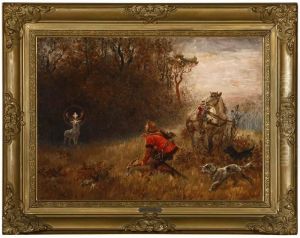Wilhelm Karl Rauber Paintings
Wilhelm Karl Rauber, born in 1849 and passing away in 1926, was a figure whose contributions span across the realms of art and anatomy, though he is not widely recognized in the mainstream art historical narrative. His work and life were situated within a period of significant transformation in Europe, marked by rapid industrialization, shifts in political territories, and advancements in science and medicine. Rauber's career was emblematic of the interdisciplinary approach between art and science that was emerging during the 19th century, a time when the boundaries between disciplines were more permeable than they are today.
Rauber’s education and career trajectory were reflective of the era's intellectual curiosity and the burgeoning relationship between artistic practice and scientific inquiry. Although specific details about his early life and artistic training are somewhat scarce, it is known that his work contributed to the field of anatomical illustration, a discipline that requires not only artistic skill but also a comprehensive understanding of human anatomy. Anatomical illustrators like Rauber played a crucial role in the educational landscape of medicine, producing detailed and accurate representations of the human body that served as essential learning tools for medical students and professionals.
Throughout his career, Rauber was involved in the production of anatomical atlases and texts, contributing to the dissemination of medical knowledge. His illustrations were characterized by their precision and clarity, making complex anatomical structures comprehensible to those studying medicine. The intersection of art and science in Rauber’s work is a testament to the critical role visual artists played in the advancement of medical education and knowledge in the pre-photography era.
Despite his contributions to the field of anatomical illustration, Wilhelm Karl Rauber remains a relatively obscure figure. His legacy is preserved primarily within the context of medical history and the specific niche of anatomical art. As the fields of art and science have continued to evolve, the importance of figures like Rauber, who bridged these worlds through their work, highlights the interconnectedness of visual art and scientific discovery.
Rauber's death in 1926 marked the end of a career that encapsulated the spirit of inquiry and collaboration between disciplines that defined the 19th century. While he may not be as celebrated as other artists or scientists from his time, his work remains a valuable part of the historical record, offering insight into the ways in which art and science have mutually informed and enriched one another.
